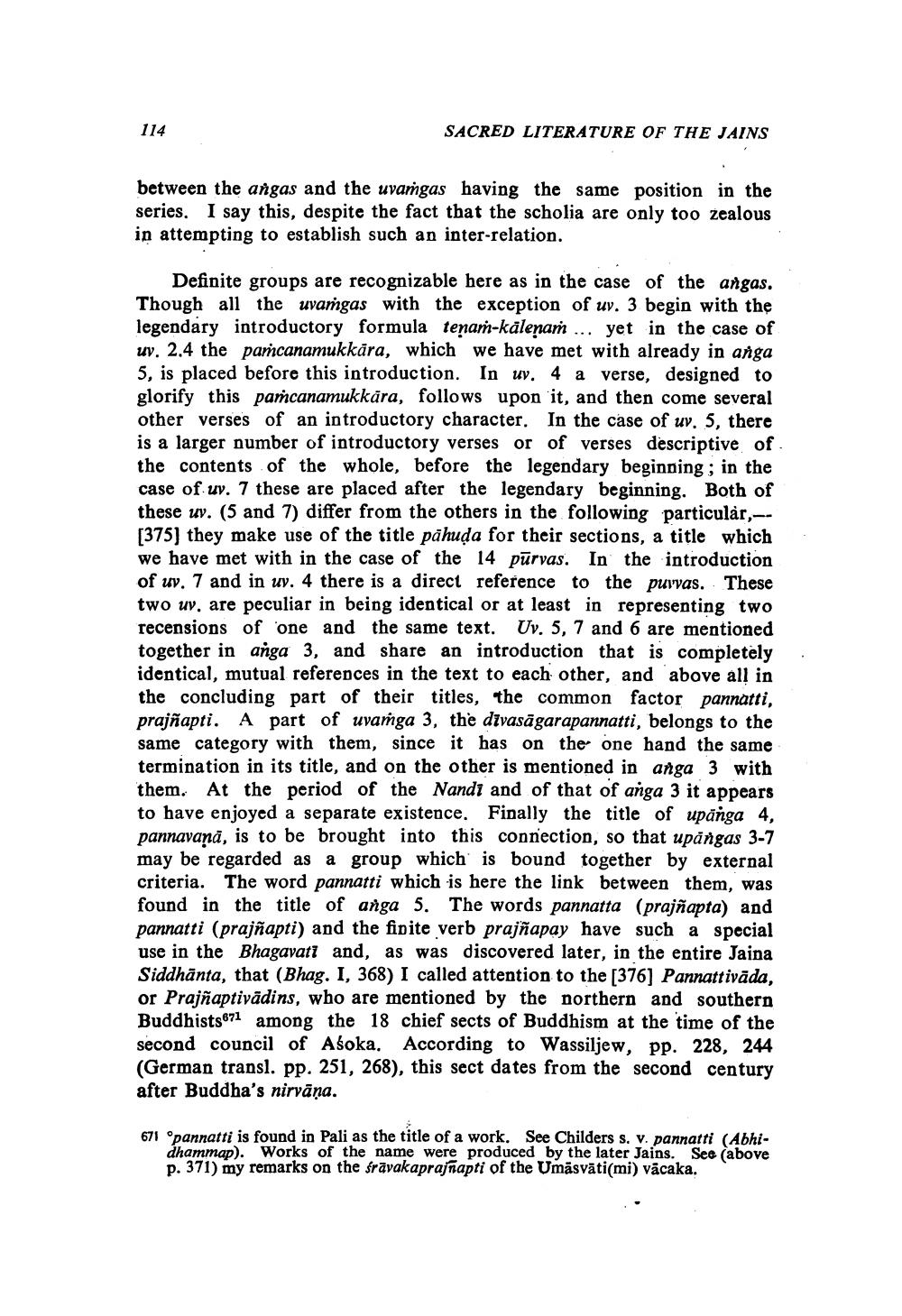________________
114
SACRED LITERATURE OF THE JAINS
between the angas and the uvařgas having the same position in the series. I say this, despite the fact that the scholia are only too zealous in attempting to establish such an inter-relation.
Definite groups are recognizable here as in the case of the angas. Though all the uvangas with the exception of uv. 3 begin with the legendary introductory formula tenaṁ-kälenaṁ ... yet in the case of uv. 2.4 the paṁcanamukkāra, which we have met with already in anga 5, is placed before this introduction. In uy. 4 a verse, designed to glorify this pamcanamukkāra, follows upon it, and then come several other verses of an introductory character. In the case of uv. 5, there is a larger number of introductory verses or of verses descriptive of the contents of the whole, before the legendary beginning; in the case of uv. 7 these are placed after the legendary beginning. Both of these uv. (5 and 7) differ from the others in the following particular,-- [375) they make use of the title pähuda for their sections, a title which we have met with in the case of the 14 pūrvas. In the introduction of uv. 7 and in uy. 4 there is a direct reference to the purvas. These two uv, are peculiar in being identical or at least in representing two recensions of one and the same text. Uv. 5, 7 and 6 are mentioned together in anga 3, and share an introduction that is completely identical, mutual references in the text to each other, and above all in the concluding part of their titles, the common factor pannatti, prajñapti. A part of uvařga 3, the divasāgarapannatti, belongs to the same category with them, since it has on the one hand the same termination in its title, and on the other is mentioned in anga 3 with them. At the period of the Nandi and of that of anga 3 it appears to have enjoyed a separate existence. Finally the title of upānga 4, pannavanā, is to be brought into this connection, so that upangas 3-7 may be regarded as a group which is bound together by external criteria. The word pannatti which is here the link between them, was found in the title of anga 5. The words pannatta (prajñapta) and pannatti (prajñapti) and the finite verb prajñapay have such a special use in the Bhagavati and, as was discovered later, in the entire Jaina Siddhānta, that (Bhag. I, 368) I called attention to the [376] Pannattivāda, or Prajñaptivādins, who are mentioned by the northern and southern Buddhists671 among the 18 chief sects of Buddhism at the time of the second council of Asoka. According to Wassiljew, pp. 228, 244 (German transl. pp. 251, 268), this sect dates from the second century after Buddha's nirvāņa.
671 pannatti is found in Pali as the title of a work. See Childers s. v. pannatti (Abhi
dhammap). Works of the name were produced by the later Jains. See (above p. 371) my remarks on the frāvakaprajnapti of the Umāsvāti(mi) vacaka.




